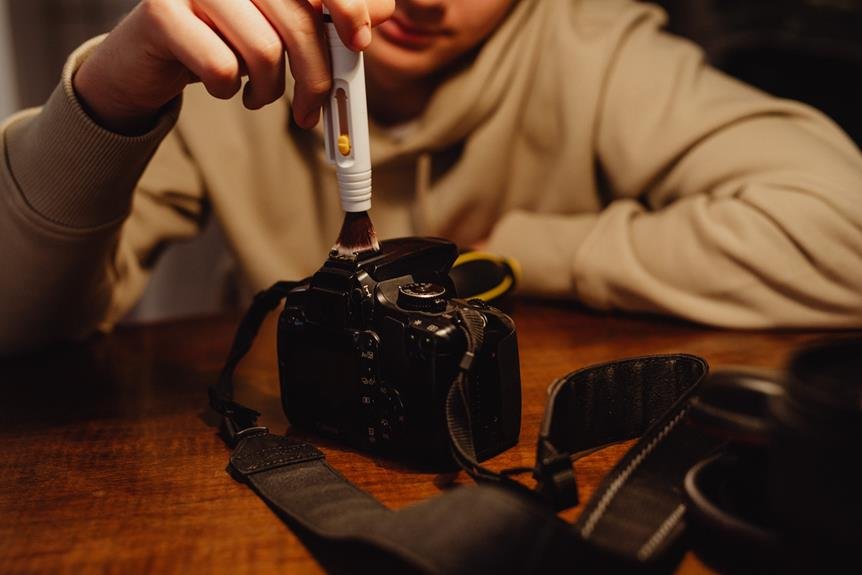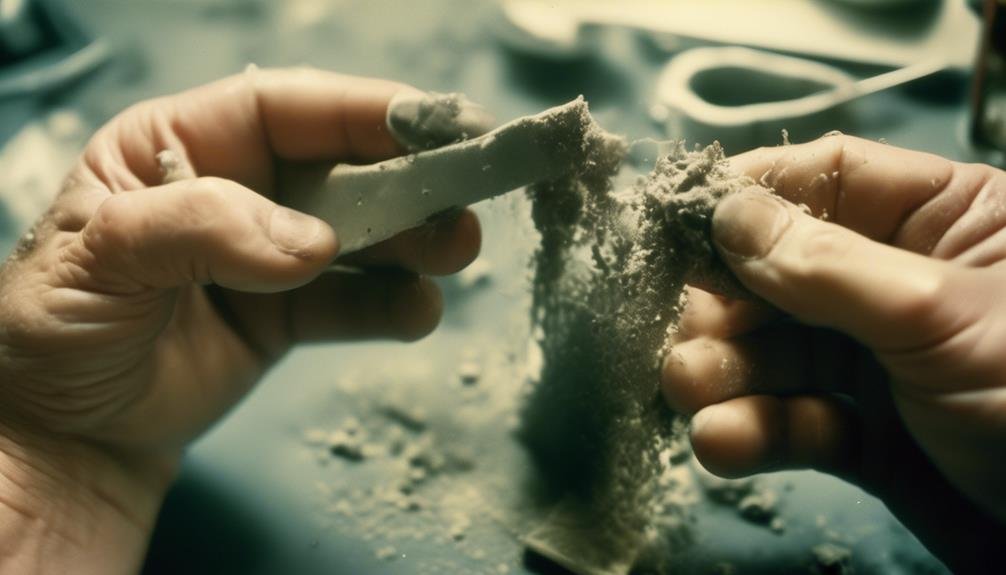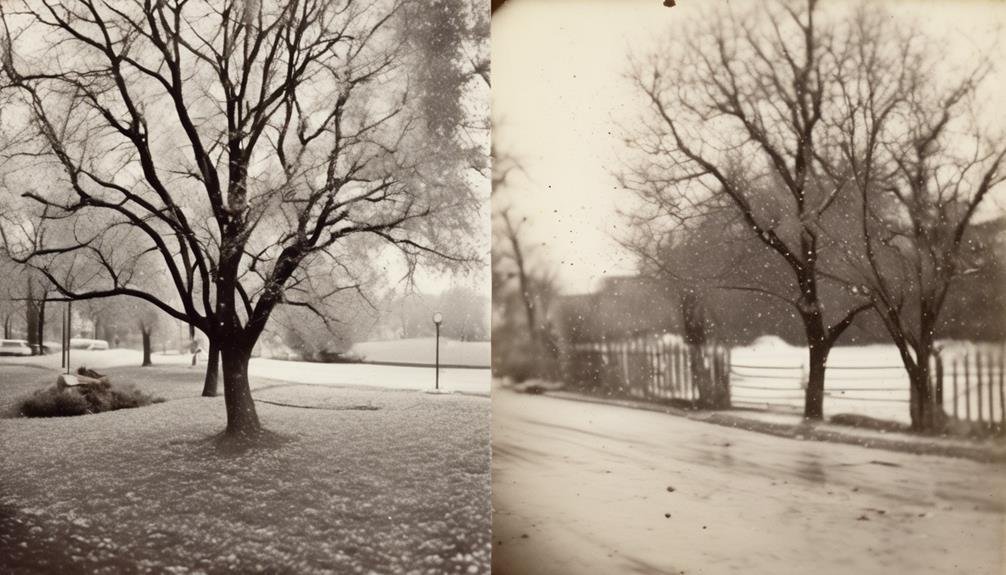
As photographers, we often focus on capturing clear, sharp images, but sometimes we overlook the importance of maintaining the very tool that makes it all possible: the camera sensor. Think of the sensor as the eyes of your camera, constantly exposed to dust, dirt, and other particles that can degrade image quality over time. So, why is it important to regularly clean your mirrorless camera sensor? Well, the answer goes beyond just ensuring spotless photos and involves the overall performance and longevity of your equipment.
Importance of Sensor Cleaning
Regular sensor cleaning is crucial for maintaining the optimal performance and image quality of your mirrorless camera. Sensor maintenance is essential to ensure that your camera continues to deliver stunning, high-resolution images. Dust, dirt, and other particles can accumulate on the sensor over time, leading to visible spots and blemishes in your photographs. These imperfections can detract from the overall image quality, affecting the sharpness and clarity of your photos.
Camera performance can be significantly impacted by a dirty sensor. As the primary component responsible for capturing light and producing the final image, the sensor plays a vital role in determining the quality of your photos. Dust and debris on the sensor can lead to issues such as reduced dynamic range, decreased sharpness, and increased image noise. By maintaining a clean sensor, you can ensure that your camera consistently delivers exceptional performance, enabling you to capture breathtaking moments with precision and clarity.
Regular sensor cleaning is an essential aspect of camera maintenance, contributing to the overall longevity and performance of your mirrorless camera. By incorporating sensor cleaning into your routine maintenance, you can uphold the highest standards of image quality and optimize your camera's capabilities for innovative photography.
Tools for Cleaning Sensors
Maintaining the optimal performance and image quality of your mirrorless camera requires the use of specific tools for cleaning the sensor. When it comes to sensor cleaning techniques, it's essential to have the right tools at hand to ensure a thorough and effective cleaning process. Here are some sensor cleaning products that can help you keep your mirrorless camera sensor in top condition:
- Sensor swabs: These specially designed swabs are perfect for applying sensor cleaning solutions to remove stubborn dust particles and smudges.
- Sensor loupe: A sensor loupe provides illuminated magnification, allowing you to inspect the sensor for any remaining debris after cleaning.
- Air blower: An air blower is useful for dislodging loose dust and dirt from the sensor without direct contact, minimizing the risk of damage.
- Sensor cleaning solution: A high-quality cleaning solution is crucial for safely and effectively removing stains and spots from the sensor surface.
These tools are essential for maintaining the cleanliness of your mirrorless camera sensor, ensuring the best possible image quality and performance.
Detailed Sensor Cleaning Process

To begin the detailed sensor cleaning process, assess the current state of your mirrorless camera sensor for any visible dust or debris. This step is crucial as it allows you to identify the extent of the cleaning required. Once the sensor has been assessed, it's time to employ effective sensor cleaning techniques to address common sensor issues. One common technique is to use a hand blower to remove loose particles. It's important to use a blower specifically designed for camera sensors to avoid introducing more debris. Another technique involves using sensor swabs and a sensor cleaning solution to gently remove stubborn spots or smudges. When using these swabs, it's essential to use a new swab for each cleaning to prevent transferring debris back onto the sensor. These sensor cleaning techniques require precision and a steady hand, but when executed correctly, they can significantly improve the performance of your mirrorless camera. Regular sensor maintenance using these techniques can ensure that your camera consistently delivers high-quality images, making it a worthwhile investment of time and effort.
Precautions While Cleaning
When cleaning your mirrorless camera sensor, it is crucial to handle the equipment with care and attention to detail to avoid causing any damage. Proper technique and the right cleaning supplies are essential for maintaining the sensor's performance and longevity. Here are some precautions to keep in mind:
- Use a blower first: Before using any cleaning solution or swab, it's important to use a blower to remove any loose dust or debris from the sensor. This reduces the risk of scratching the sensor during the cleaning process.
- Avoid excessive pressure: When using a sensor cleaning swab, gentle and consistent pressure is key. Excessive force can damage the sensor or the delicate components surrounding it.
- Use appropriate cleaning solutions: Always use sensor-specific cleaning solutions and swabs designed for mirrorless camera sensors. Using the wrong type of cleaning solution can leave residue or damage the sensor coating.
- Keep the camera body facing downward: This simple step can prevent loose particles from falling further into the camera body while cleaning the sensor.
Following these precautions will help ensure that your mirrorless camera sensor is cleaned effectively without causing any harm.
Frequency of Sensor Cleaning

Regular sensor cleaning is essential to maintain the optimal performance of your mirrorless camera and ensure the quality of your photographs. When it comes to sensor maintenance, the cleaning schedule depends on how frequently you use your camera and the shooting conditions. For most photographers, a good rule of thumb is to inspect the sensor every 1-2 months. However, if you frequently change lenses in dusty environments or shoot in extreme conditions, such as sandy or humid locations, you may need to clean your sensor more often. Additionally, if you notice visible dust spots in your images, it's crucial to address the issue promptly to prevent them from becoming a permanent nuisance. Modern mirrorless cameras often have built-in sensor cleaning systems, but these may not always be sufficient for removing stubborn debris. In such cases, manual cleaning by a professional or yourself may be necessary. By adhering to a regular sensor cleaning schedule, you can ensure that your camera continues to deliver exceptional image quality and performance.
Frequently Asked Questions
Can I Use the Same Cleaning Tools for My Mirrorless Camera Sensor as I Do for My Lenses?
Yes, you can use the same brushes and swabs for your mirrorless camera sensor as you do for your lenses. It's important to have proper cleaning tools for sensor cleaning, especially when dealing with stubborn dirt and smudges. Experience matters.
Is It Safe to Use Compressed Air to Clean My Mirrorless Camera Sensor?
Using compressed air to clean your mirrorless camera sensor is safe if done properly. Sensor cleaning tools are recommended for inexperienced cleaning. Always follow safe techniques, and remember that regular indoor use necessitates necessary maintenance.
Are There Any Specific Cleaning Techniques for Removing Stubborn Dirt or Smudges From the Sensor?
When removing stubborn dirt or smudges from the sensor, specific cleaning techniques are crucial. We've found alternative methods like swabs and sensor gel sticks effective. Preventive maintenance also plays a key role in ensuring optimal sensor performance.
Can I Clean My Mirrorless Camera Sensor if I Don't Have Experience With Sensor Cleaning?
When it comes to cleaning your mirrorless camera sensor without experience, professional services offer peace of mind. However, DIY methods for sensor maintenance can be learned. It's crucial to weigh the risks and benefits.
Is It Necessary to Clean the Sensor of My Mirrorless Camera if I Only Use It Indoors or in Clean Environments?
Absolutely, it's essential to clean the sensor of our mirrorless camera regularly, even if used indoors. Dust and particles can still accumulate, affecting image quality. Indoor vs outdoor sensor cleaning is crucial, as clean environments vs dirty environments impact sensor maintenance.
